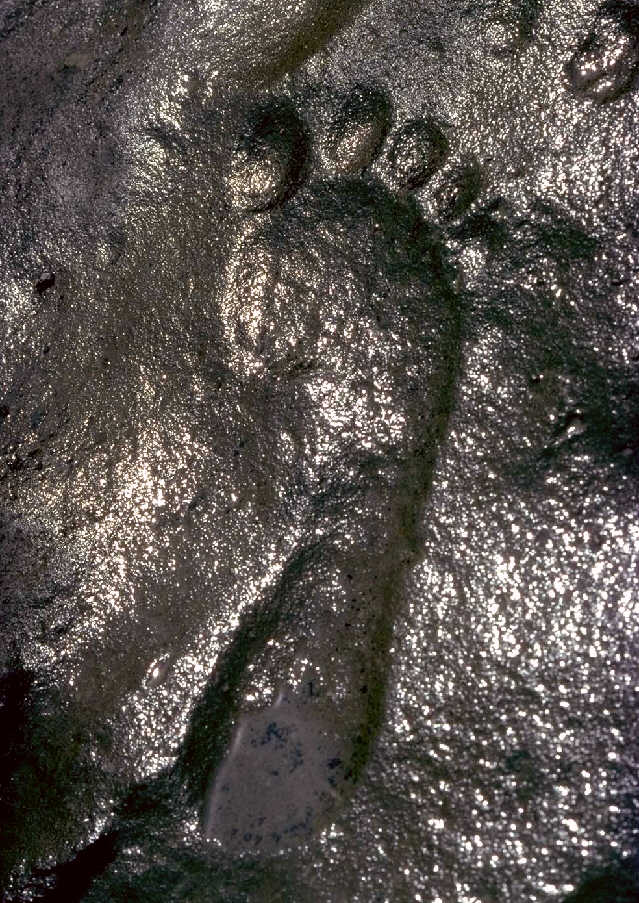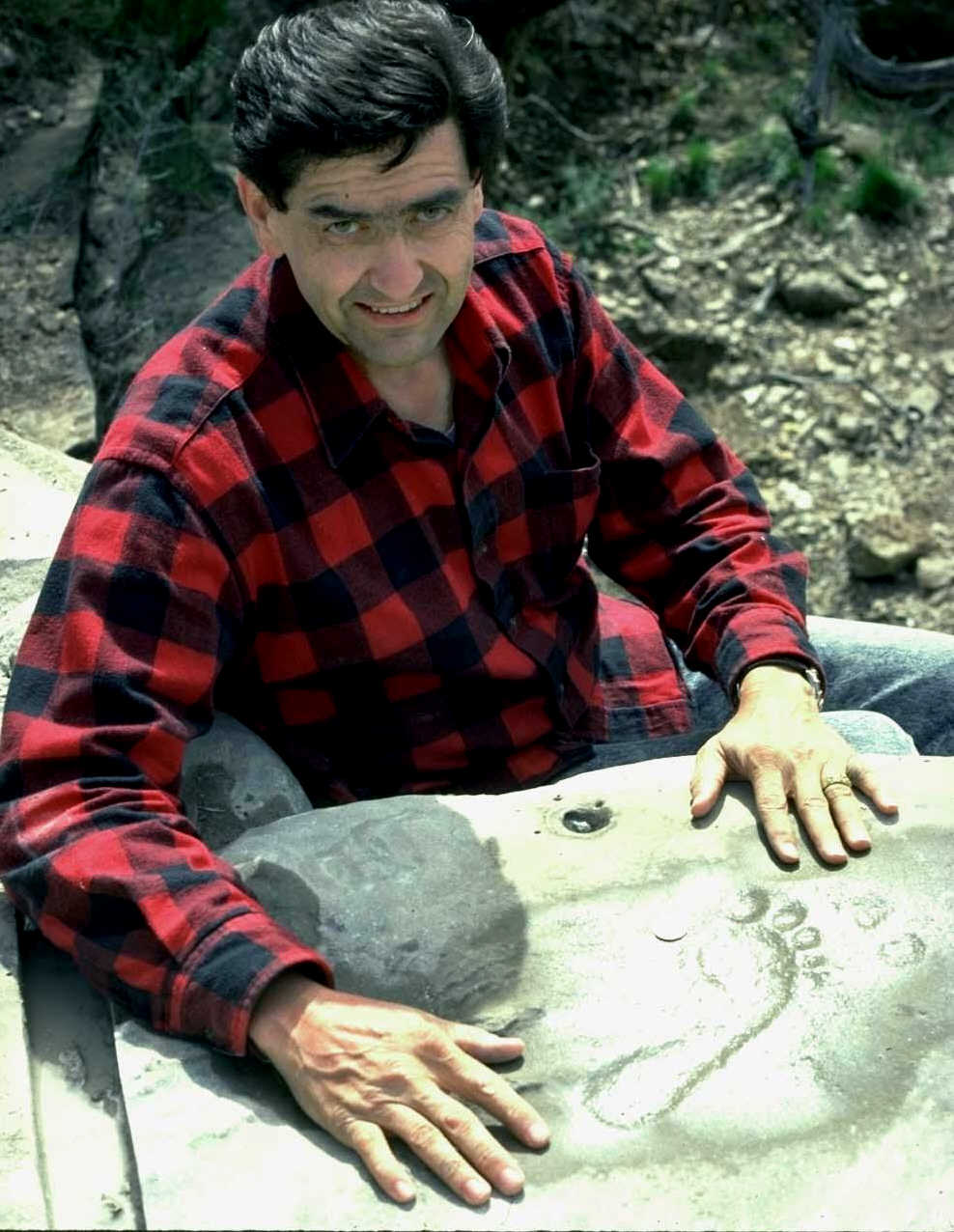

|
| The Zapata Track |
Part of Kuban's Paluxy web site
On the Bible.ca website, next to an image of Don Patton with the track in question, the accompanying paragraph states that among the tracks found in New Mexico by Jerry MacDonald were problematic ones among which "we" (presumably Patton and associates) found "even more obvious problematica." This gives the false impressions that MacDonald had found and described similar human-like tracks. I have worked with MacDonald, and can testify that this is entirely untrue. His track assessments are also clear from his own writings (MacDonald, 1994). The Permian problematica he described consisted not of human tracks, but various large amphibian and mammal-like reptile tracks. For detailed scientific descriptions of the New Mexico tracks see Lucas and Heckert (1995).

|
| Don Patton with "Zapata Track" |
Among the relatively few creationists who appear to support this alleged human print include Patton's associate and long-time "man track" advocate Carl Baugh, who displays a cast of the "print" in his little Creation Evidence Museum in Texas. Another associate of Baugh, Joe Taylor, briefly discusses the Zapata print in his book, Fossil Facts and Fantasies (Taylor, 1999). Although he does not staunchly support the print, he states that it "appears to be a female, barefoot print." He states that it was found in 1929, and that "it is said that at that time, one half of a second track was visible at the edge of the ledge bearing both tracks. The edge of this ledge has since fallen off." Taylor does not say where he learned these details, and does not cite any literature, scientific or popular, regarding it.
A 2006 web site by creationist Jeff A. Benner (since removed) strongly promoted the track, but provided no more details than Patton. Like Patton, Brenner attempted to associate the print with MacDonald's finds, falsely implying that MacDonald found prints similar to the Zapata track. Benner also incorrectly stated, "The Creationist community agree that the print is human in origin and proof that humans existed during the time of the dinosaur." (Benner, 2006). However, to date no major creationist group has endorsed the Zapata print as genuine, let alone considered it proof of human and dinosaur cohabitation. In fact, no confirmed dinosaur or human remains been found in any pre-Quaternary strata, as the major creationist group "Answers in Genesis" seems to agree (Snelling, 1991).
Benner also revealed his misunderstanding of science, and applies a double standard, when he states, "Because of the silence of the evolutionary communities on this print it appears that there is no geological or evolutionary explanation for this print." Scientists have no obligation to address claims that are not properly documented in the first place. I myself have only addressed this alleged human print because I've been following and addressing "man track" claims for years, and wanted to provide some commentary on Patton's assertions. However, so far there is little mainstream scientists can address, without more information from the print's supporters.
Conclusion
The Zapata track has not been demonstrated to be a real footprint, nor has any evidence been provided that the rock came from a Permian rock formation. Without more substantial evidence regarding its origin, the print is a curiosity at best, not reliable anti-evolutionary evidence.
Lucas, S.G. and A.B. Heckert. 1995. Early Permian Footprints and Facies. New Mexico Museum of Natural History and Science, Bulletin 6. Albuquerque, 301 pp.
MacDonald, J.P. 1994. Earth's First Steps: tracking life before the dinosaurs. Johnson Books, 290 pp.
Snelling, Andrew A., 1991, Web site article at: www.answersingenesis.org/creation/v14/i1/humanfossils.asp . Originally published in: Creation 14 (1):28-33, December 1991